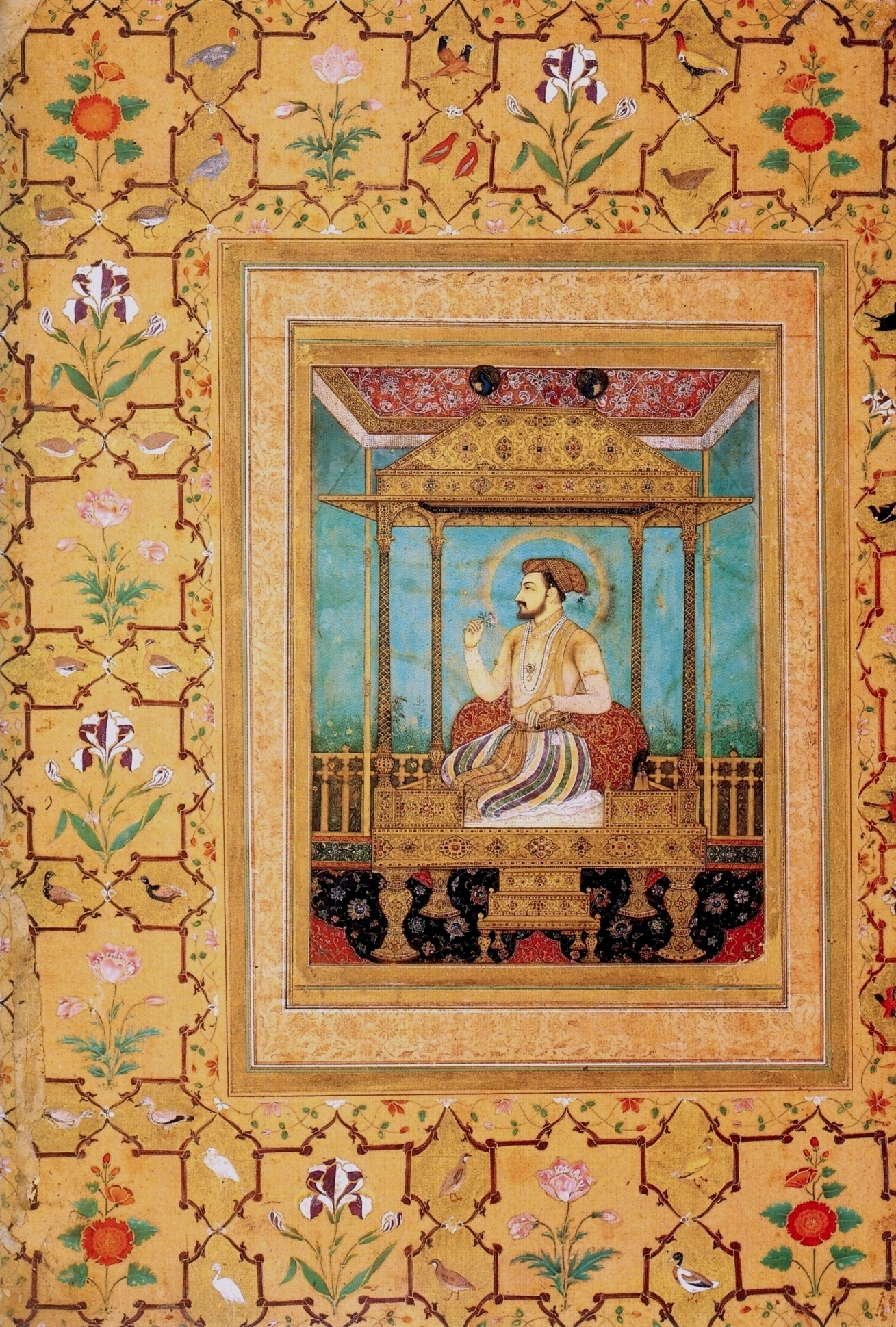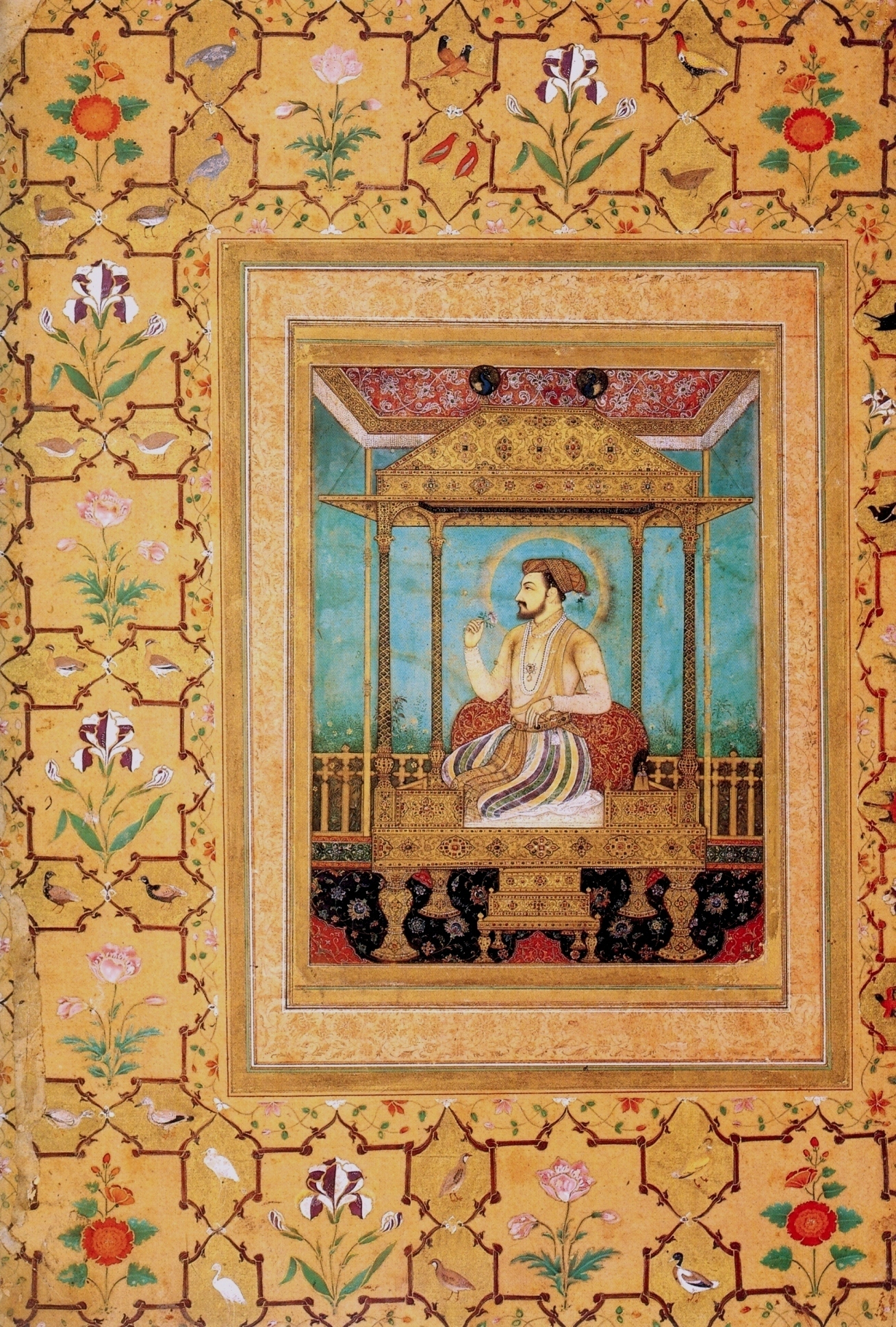Mughal miniature paintings emerged under the patronage of Emperor Akbar in 16th century India. This art form primarily comprised miniature portraits with motifs, usually as a part of commemorative royal albums. The technique was passed down through generations by apprenticeship and familial ties.
The imperial painter Govardhan flourished through three generations of Mughal emperors and was renowned for his sophisticated portraitures. He created this particular illustration during the reign of Akbar’s grandson, Emperor Shah Jahan (who would later build the Taj Mahal). It portrays the Emperor sitting on the lost Peacock Throne.
Commissioned in 1628, there have been several artistic renditions and historical accounts of Shah Jahan’s coveted Peacock Throne. It was described as an enclosed bed-like platform on posts, under a canopy supported by 12 columns. The name was derived from the design that featured two bejeweled peacocks. French jeweller Jean-Baptiste Tavernier visited Delhi in 1665 and had the enviable opportunity of personally inspecting the throne. His travel journals meticulously detail the adornments of hundreds of gemstones including pearls, diamonds, rubies, and emeralds. This grandiose display took seven years to complete and is believed to have cost twice as much as the Taj Mahal!
Persian ruler, Nadir Shah invaded Delhi in 1739 and defeated Shah Jahan’s descendant, Emperor Muhammad Shah. The conqueror seized the throne and several other invaluable Mughal artifacts. It is believed that after Nadir Shah was assassinated in Iran in 1747, looters used the cover of the anarchy that followed to dismantle and distribute the throne among themselves.
With designs reminiscent of Shah Jahan’s original, later Mughal and Persian monarchs created more magnificent thrones that were also aptly evocative of the exceptional opulence of both great empires.
- Maya Tola


 Govardhan
Govardhan